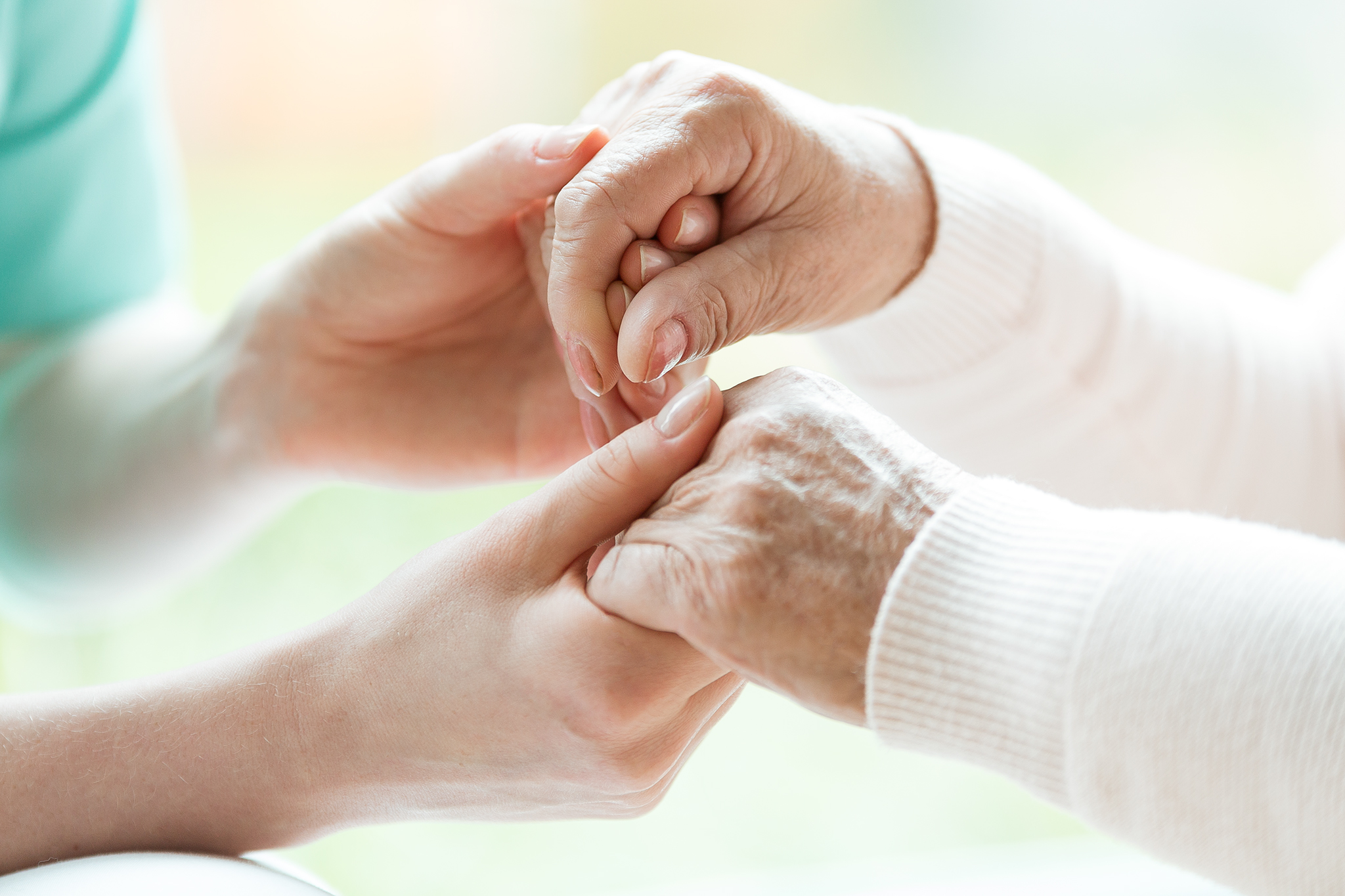Review Date: October 2024
- Patients
- Benign disease services
- Dupuytren’s disease
Introduction
Dupuytren’s disease
Radiation therapy for Dupuytren’s disease
Radiation therapy may be used to help treat early-stage Dupuytren's disease.1

What is Dupuytren’s disease?
Chapter 01
What is Dupuytren’s disease?
Dupuytren’s disease is a condition that causes excessive scar tissue within the fibrous fascia beneath the skin on the palm of the hand.1 In the early stages this is seen as lumps or cord-like thickenings.1 Over time contraction of the scar tissue can pull the fingers towards the palm, into a permanent bent position called a ‘contracture’, which can limit function of the hand.1
Make an enquiry
To learn more about radiation therapy treatment options for Dupuytren's disease, make an enquiry. Please note a referral from a GP or specialist is needed for an initial assessment by a radiation oncologist.
What causes Dupuytren’s disease?
Chapter 02
What causes Dupuytren’s disease?
Dupuytren's disease is an inherited genetic disorder, that is more common in men than women and more prevalent in older age groups.1,2
The disease has early phases where nodules and cords start to become noticeable, followed by later phases where the disease can lead to deformity.2 Not all people experience progressive diseases, and for a large majority the disease will stabilise or even regress.2
The condition is usually not painful, and although periods of discomfort can occur, this will usually settle within a few months.2 Perhaps the most challenging aspects of this condition are its unpredictability and potential impact on the ability to perform general daily activities.2
How is Dupuytren’s contracture treated?
Chapter 03
How is Dupuytren’s contracture treated?
You should discuss treatment options with your referring doctor or specialist. Treatment recomendations will depend on several factors including the degree of impact the disease is having on your quality of life.1,2 Treatment may be offered for the correction of contractures (when the fingers are pulled into a bent position).1,2
Treatment options may include:1,2
- Needle aponeuroromy – where the contracted tissue is divided so the finger can be stretched out again
- Surgical fasciectomy
- Radiation therapy - this may be helpful in preventing the progression of early stage Dupuytren's disease, thereby reducing the need for invasive procedures

Radiation therapy for Dupuytren’s contracture
Chapter 04
Radiation therapy for Dupuytren’s contracture
Assessment
An initial assessment and discussion is important to help understand the uncertainties and alternative treatment options.
At the assessment, your specialist will discuss whether radiotherapy might be helpful for your condition, as well any as side-effects you may experience.
Note: You will need a referral from a GP or specialist for an assessment.
Treatment
Radiation therapy may help to prevent the worsening of Dupuytren's contracture symptoms.1,2
The aim of radiation therapy is to reduce overgrowth of the cells which are known to be overactive in Dupuytren’s disease.1 This is to try and slow progression, as well as prevent further scar tissue.1 Radiation therapy may not be suitable for everybody and your doctor can discuss your specific circumstances further.1,2
Radiation therapy is usually delivered externally using a machine called a linear accelerator (LINAC).3 If your doctor decides this therapy is suitable for you, our team can offer more details around how the therapy works, how the radiation is delivered, how long it takes and any potential side-effects.3
Following the completion of treatment, please speak to your doctor directly regarding any concerns or side-effects that you may experience.
Make an enquiry
To learn more about radiation therapy treatment options for Dupuytren's contracture, please make an enquiry. Please note a referral from a GP or specialist is needed for an initial assessment by a radiation oncologist.
Current clinical trial - DEPART
Chapter 05
Current clinical trial - DEPART
Radiation therapy has been used to help treat Dupuytren's contracture for many years. We are supporting the recruitment of patients with Dupuytren's contracture for a research study called 'DEPART'.
This study will assess patients with Dupuytren’s Disease in two settings:
- those who have early-stage disease (no flexion contractures),
- those who have late-stage disease requiring a straightening procedure to correct flexion contractures.
The trial is aimed at assessing how effective radiation therapy is at preventing the progression or recurrence of contractures. The trial is being run at select centres across the country:
For further information regarding this trial, please click here.
Or contact us at: GC-Depart@genesiscare.com
Content reviewed by

Find a centre near you
Read next

Condition
Keloid scars
A keloid scar is a benign, overgrown lump that can sometimes develop when a wound heals, or even after minor skin damage such as acne or ear piercing.

Condition
Ledderhose disease
The main cause of Ledderhose disease remains uncertain. However, there are several risk factors associated with developing this disease.

Condition
Plantar fasciitis
Plantar fasciitis is a very common repetitive strain condition affecting around 10% of the population at some point in their lives, more commonly women.
- Ruettermann M, et al. Dtsch Arztebl Int. 2021;118(46):781-88
- Walthill J, et al. . National Library of Medicine. StatPearls Publishing LLC [Internet]. Dupuytren Contracture. Treasure island (FL). Last Update: Feb. 2023 [Cited July 2023]. Access from: https://www.ncbi.nlm.nih.gov/books/NBK526074
- Cancer Council Australia [website]. Understanding Radiation Therapy. Last updated Dec. 2021 [cited July 2023]. Access: https://www.cancer.org.au

You are leaving our website
You are now leaving our website. GenesisCare do not control this content and therefore are not responsible for its accuracy or reliability.

You are leaving our website
You are now leaving our website. GenesisCare do not control this content and therefore are not responsible for its accuracy or reliability.

You are leaving our website
You are now leaving our website. GenesisCare do not control this content and therefore are not responsible for its accuracy or reliability.
Disclaimer:
This website is provided for information purposes only. Nothing on this website is intended to be used as medical advice, or to diagnose, treat, cure or prevent any disease. It should not be used as a substitute for your own health professional's advice. Any medical procedure or treatment carries risks. Before proceeding with treatment, you should discuss the risks and benefits of the treatment with an appropriately qualified health practitioner. Individual treatment outcomes and experiences will vary.


